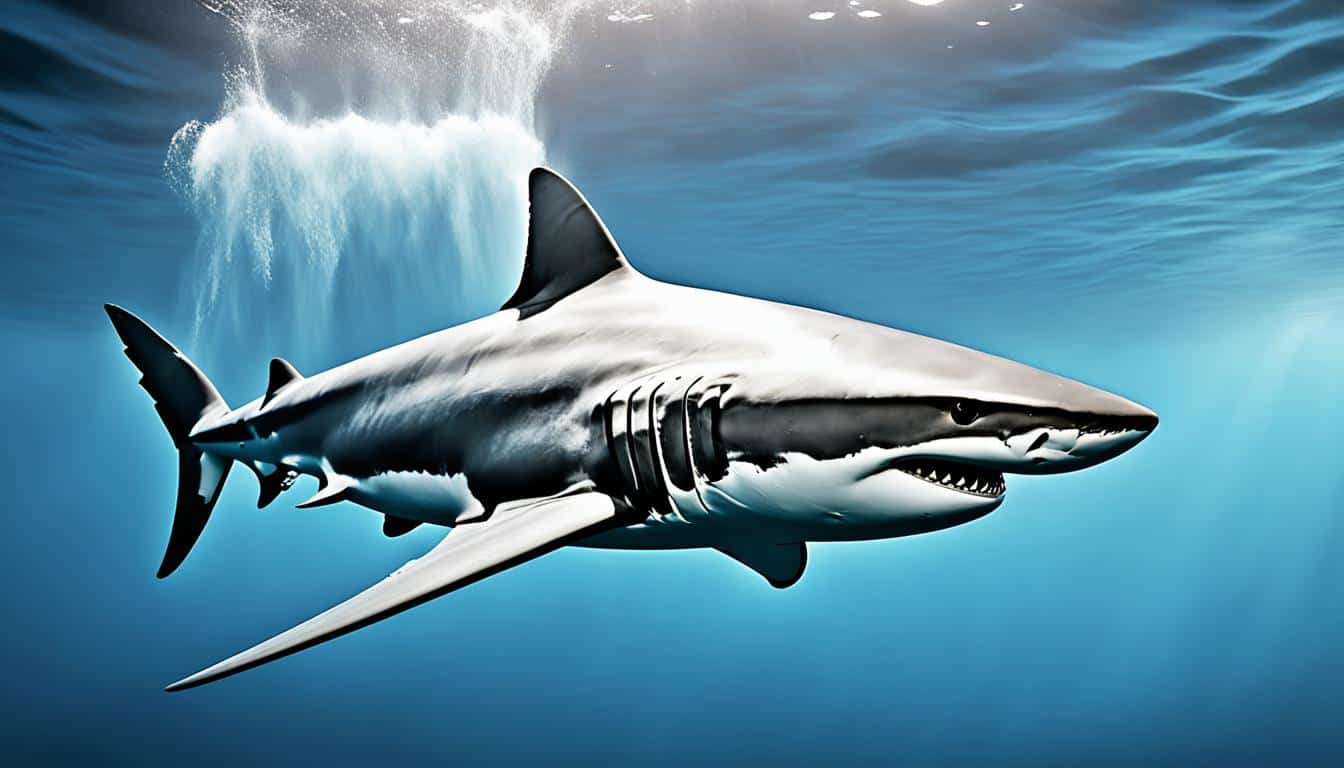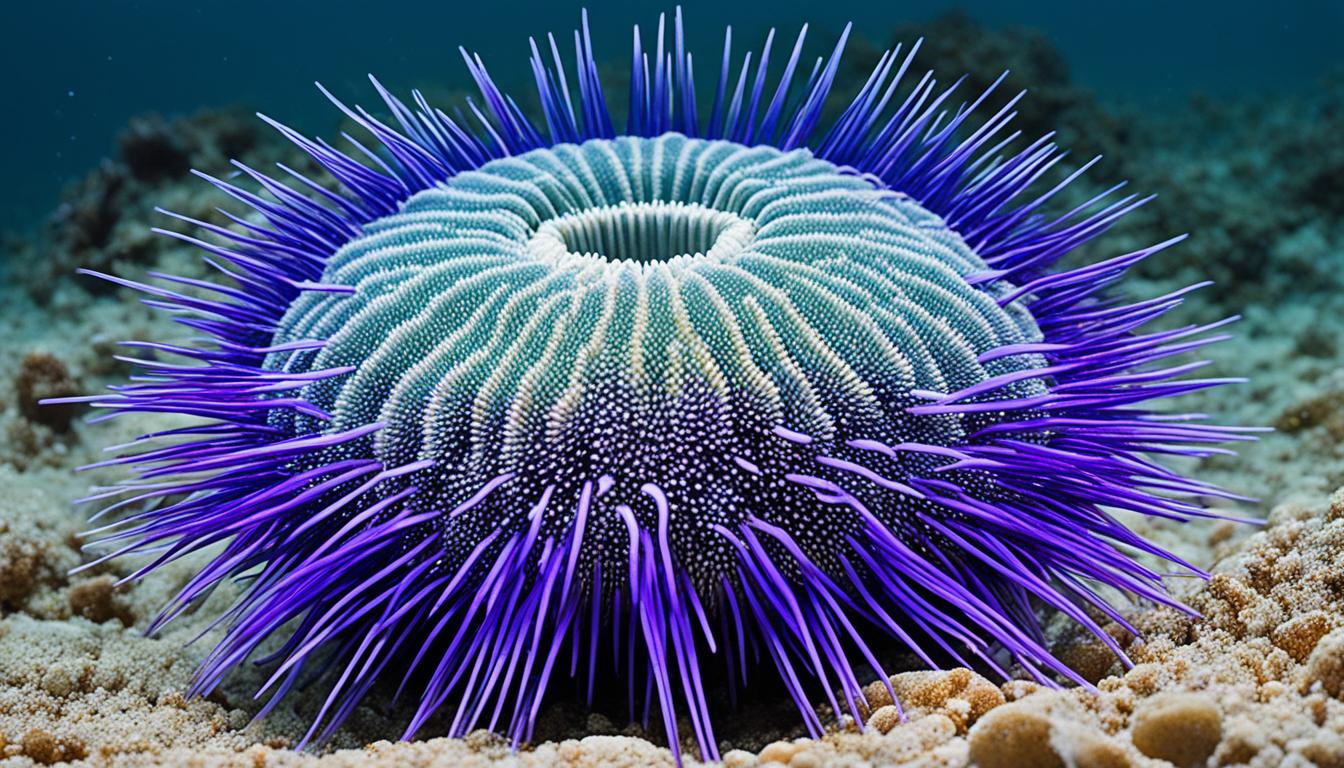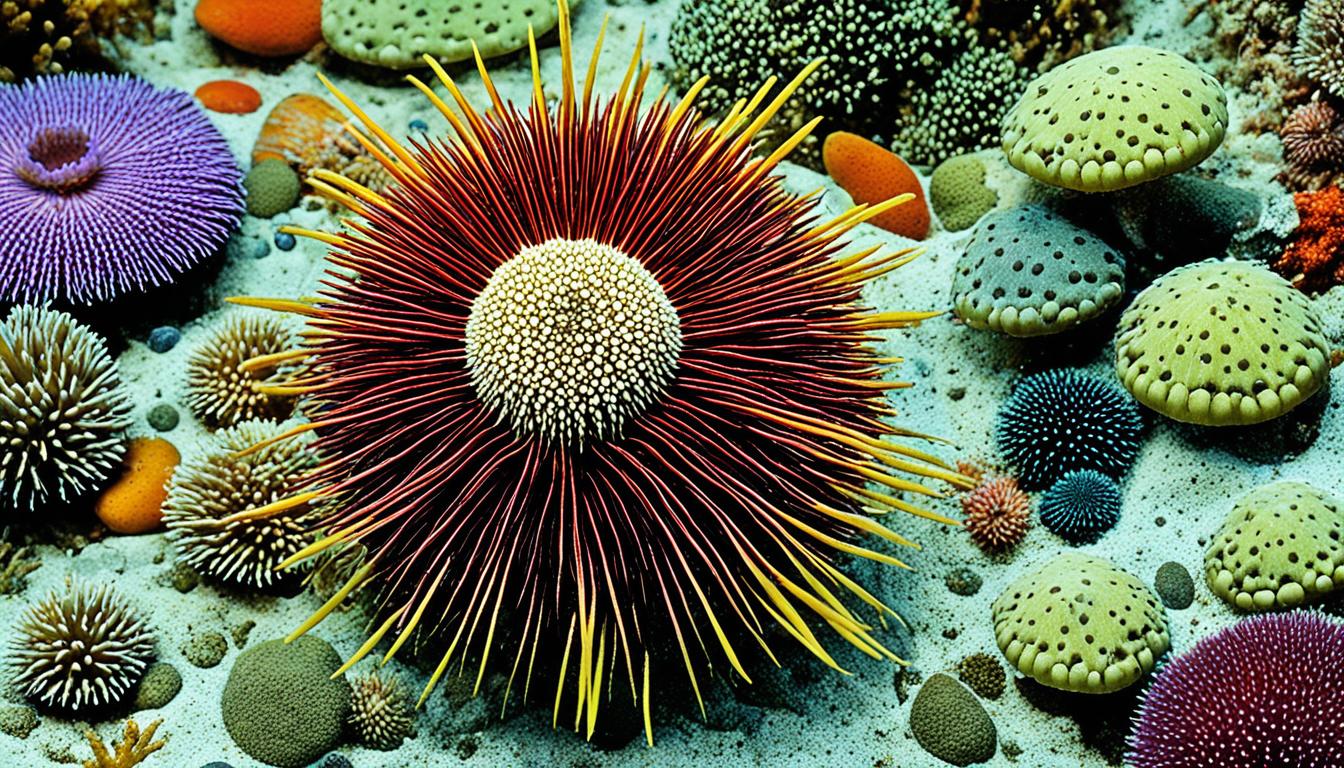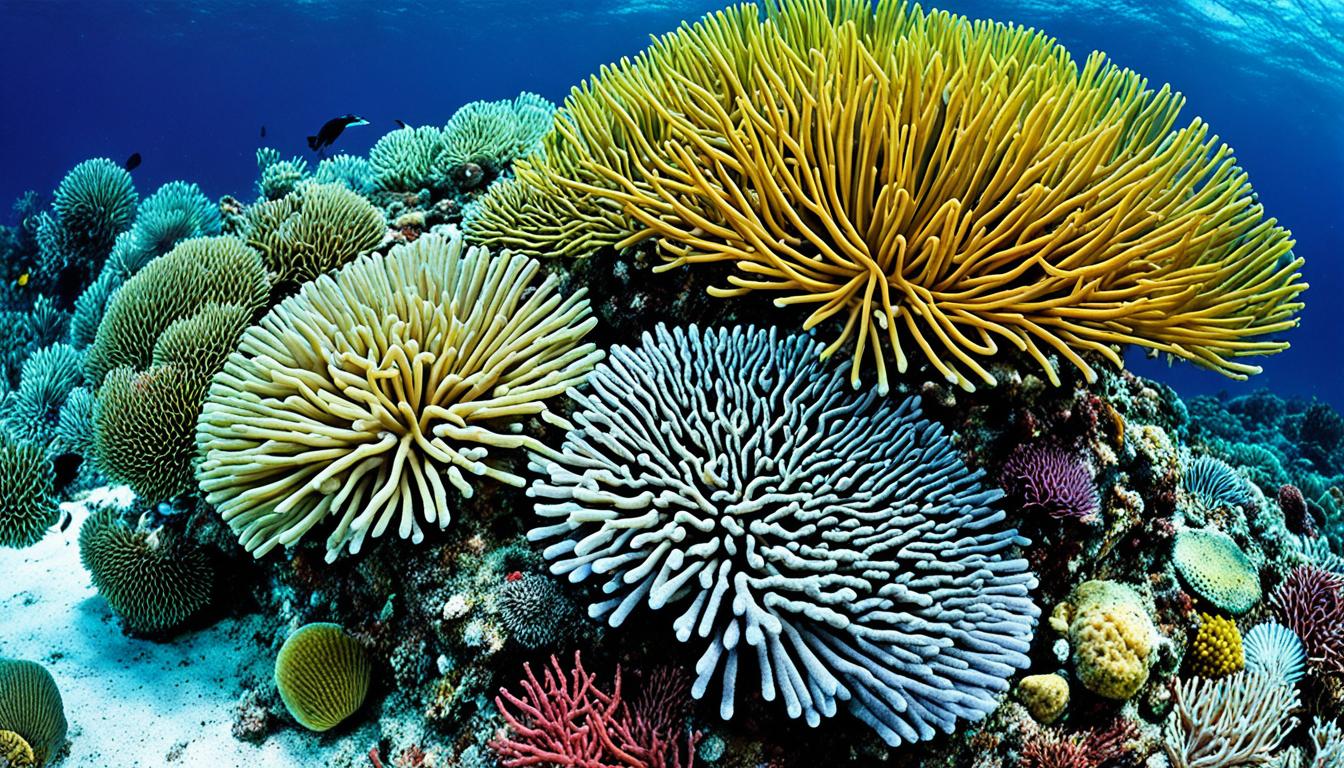Are you curious about how fast can sharks swim? These amazing creatures are known for their hunting skills and incredible swimming abilities. We will explore the world of shark swimming speed, looking at their top speeds and how they adapt to their underwater homes.
By learning about the speeds of different sharks, you’ll understand their importance in the ocean. Sharks swim fast to hunt and survive. Join us as we discover the secrets of their swimming speed.
Understanding Shark Swimming Speed
Sharks are known for their impressive swimming speed. This skill helps them survive in different water environments. Their bodies are built to cut through the water easily, thanks to their streamlined shape. This shape helps them move faster, boosting their shark propulsion speed.
Sharks have strong muscles that help them swim well. Their tails act like propellers, pushing them forward quickly. With their special fins, they can dodge or chase prey with ease.
To understand how fast they are, compare them to other sea creatures. For example, the sailfish can go as fast as 68 miles per hour. The shortfin mako shark can hit about 45 miles per hour. These speeds show how sharks have evolved to be fast, which is crucial for survival.
The Shortfin Mako Shark: The Speedster of the Ocean
The shortfin mako shark is known as one of the fastest in the ocean. It has amazing speed, reaching incredible velocities. Let’s explore how it’s adapted for such speed.
Top Speed Capabilities
This shark can go as fast as 60 mph (97 kph). Its speed is unmatched in the water. It can quickly chase prey and outrun others. This makes it a top predator in the ocean.
Unique Adaptations for Speed
The shortfin mako’s speed comes from special features. It has dermal denticles, which are like small teeth that reduce drag. Its strong tail and long body also help it stay fast over long distances.
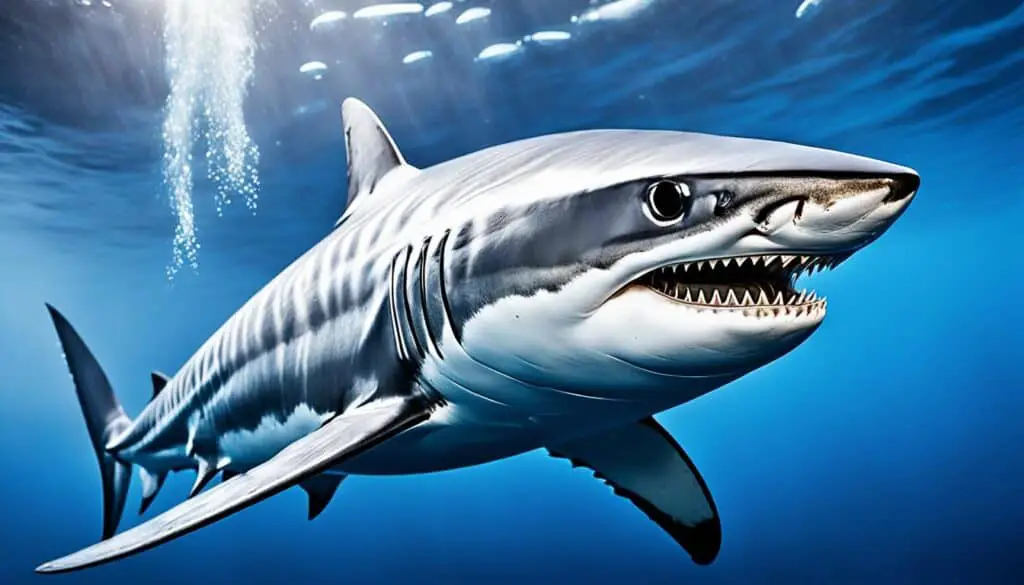
How Fast Can Sharks Swim? Exploring the Fastest Species
Sharks show a wide range of swimming speeds, proving their skill in the ocean. By comparing speeds, we learn about their unique traits and abilities. Some sharks are the fastest, setting the bar for aquatic speed.
Comparison of Speeds Among Different Sharks
| Shark Species | Top Speed (mph) |
|---|---|
| Shortfin Mako | 40 |
| Thresher Shark | 20-30 |
| Great White Shark | 25 |
| Blue Shark | 20-25 |
The shortfin mako is a speed champion, reaching up to 40 mph. The blue shark and great white shark also swim fast, between 20 and 25 mph. These speeds show how different sharks move and adapt to their environments.
Factors Affecting Swimming Speed
Many things affect a shark’s speed. The environment plays a big part, changing how fast they swim. Water temperature and salt levels affect their energy and performance.
Size and muscle strength also matter. Bigger sharks might not always be the fastest. Their swimming techniques help them move efficiently through the water.
How much energy sharks have affects their speed over time. Larger sharks might have more energy but not always swim as fast as smaller ones. These factors influence how fast sharks move in the water.
The Great White Shark: Power Meets Speed
The great white shark is a mix of strength and agility, showing off amazing shark swimming speed. They can swim up to about 25 mph, making them fast for catching prey or escaping danger. Their sleek shape, strong muscles, and special tail help them move swiftly in deep water.
Speed Characteristics of Great White Sharks
Great white sharks have some special features that help them swim fast:
- Muscular Build: Their strong muscles help them push through the water quickly and powerfully.
- Tail Design: Their big, crescent-shaped tail gives them a strong push when they swim.
- Streamlined Body: Their slim body cuts through the water easily, making them faster.
Comparison with Other Predators
Great white sharks are fast, which is key to their place in the ocean. Here’s how they stack up against other sea creatures:
| Species | Top Speed (mph) | Hunting Strategy |
|---|---|---|
| Great White Shark | 25 | Ambush predator using bursts of speed |
| Orca | 34 | Cooperative hunting strategy, fast chases |
| Shortfin Mako Shark | 45 | High-speed chase predator |
Speed is very important for predators in the ocean. It helps us understand how great white sharks can be at the top of their game. The way top speed of sharks and their hunting methods work together shows their role as top predators. When you dive into the ocean, think about how sharks’ speed and special features affect their hunting and survival.
Shark Movement Rates: What Influences Their Speed?
Shark movement rates are shaped by both their biology and the environment. Their bodies are designed for speed, with fins and streamlined shapes. These features help sharks move through the water with great efficiency.
But, it’s not just about their bodies. Things like water currents, temperature, and where they live also play a big part. For example, swimming in strong currents can make it harder for sharks to move fast. Knowing this helps us understand how sharks stay on top as predators and adapt to their homes.
Looking at how sharks’ bodies and their surroundings work together helps us understand their speed. This insight shows us how sharks manage to do well in different places. It also highlights their important role in the ocean.
FAQ
How fast can sharks swim?
Sharks swim at different speeds based on their type. The shortfin mako shark is the fastest, reaching up to 60 mph (97 kph). Other sharks, like the great white, swim about 25 mph (40 kph).
What factors affect shark swimming speed?
Many things affect how fast sharks swim. This includes the water’s temperature and salt level, the shark’s size and muscle make-up, and how it swims.
Which shark species is the fastest?
The shortfin mako shark is known as the ocean’s fastest shark. It can swim incredibly fast to help it hunt and escape.
How do sharks achieve their high swimming speeds?
Sharks are fast because of their sleek bodies, strong tails, and special fins. These features help them swim quickly when hunting or getting away from predators.
How does the swimming speed of sharks compare to other marine animals?
Sharks, especially the shortfin mako, swim much faster than many sea creatures. For instance, orcas can go up to 34 mph (55 kph), but sharks have special traits that let them match or beat these speeds in the water.
What role does speed play in shark predation?
Speed is key for sharks to catch their prey. Fast sharks, like the shortfin mako, use their speed to surprise and catch their food, helping them survive in the ocean.
What are the adaptations that make the shortfin mako such a fast shark?
The shortfin mako has special features like dermal denticles that reduce drag, a strong tail, and a long body shape. These help it swim very fast and efficiently.
How do environmental conditions impact shark swimming speed?
The environment affects how fast sharks swim. Strong currents or rough waters can slow them down. But in calm waters, they can swim much faster.

